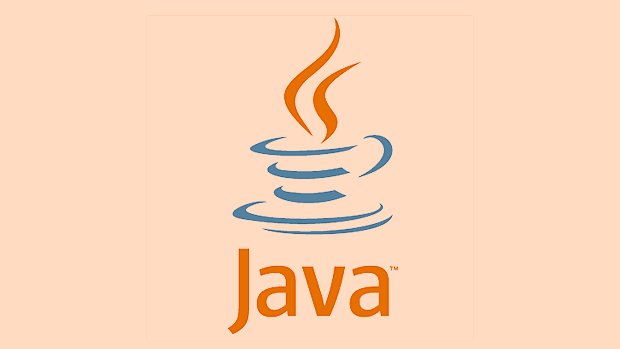ThreadLocal is used in Java to create thread-private variables, each thread has an independent copy to avoid concurrency problems. It stores values ??through ThreadLocalMap inside the thread. Pay attention to timely cleaning when using it to prevent memory leakage. Common uses include user session management, database connections, transaction context, and log tracking. Best practices include: 1. Call remove() to clean it up after use; 2. Avoid overuse; 3. InheritableThreadLocal is required for child thread inheritance; 4. Do not store large objects. The initial value can be set through initialValue() or withInitial(), and the initialization is delayed until the first get() call.

In Java, ThreadLocal is a class that allows you to create variables that can only be accessed by a single thread at a time. This means each thread has its own, independently initialized copy of the variable. It's useful when you want to maintain state within a thread, such as user authentication details, database connections, or transaction context, without worrying about concurrency issues.

How ThreadLocal Works
At its core, ThreadLocal provides a way for each thread to have its own unique instance of a variable. When you set a value in a ThreadLocal , it's stored in a hidden map inside the thread object, keyed by the ThreadLocal instance itself.
Here's a simple example:

ThreadLocal<String> threadLocal = new ThreadLocal<>();
threadLocal.set("Hello from thread");
String value = threadLocal.get(); Each thread will see a different value based on what it previously set. Behind the scenes, every thread maintains a ThreadLocalMap where these values ??are stored.
One thing to keep in mind: if you forget to clean up after using a ThreadLocal , especially in environments like web servers where threads are reused (like thread pools), it can lead to memory leaks. That's why it's good practice to call remove() when you're done.

Common Use Cases
There are several practical scenarios where ThreadLocal comes in handy:
- User session management : Storing user-specific data during a request lifecycle.
- Database connection handling : Ensuring each thread uses its own connection without sharing.
- Transaction context : Keeping track of transaction state per thread.
- Logging MDC (Mapped Diagnostic Context) : Used in logging frameworks like Log4j or SLF4J to add contextual information per thread.
These cases benefit from having a clean separation between threads, which avoids synchronization and locking mechanisms.
Best Practices and Pitfalls
Using ThreadLocal isn't complicated, but there are some things to watch out for:
- Always clean up with
threadLocal.remove()once you're done — especially in long-running threads or thread pools. - Don't overuse
ThreadLocal. It might seem convenient, but it can make testing and debugging harder because it hides state changes. - Be cautious with inheritance: regular
ThreadLocaldoesn't pass values ??to child threads. If you need that, useInheritableThreadLocal. - Avoid storing large objects unless necessary, since they'll stay around as long as the thread does.
Also, remember that ThreadLocal doesn't solve shared mutable state problems across threads — it just sidestips them by giving each thread its own version.
Initializing Values
If you want to provide an initial value for your ThreadLocal instead of starting with null, you can override the initialValue() method:
ThreadLocal<Integer> threadLocal = ThreadLocal.withInitial(() -> 1);
Or using the older approach:
ThreadLocal<Integer> threadLocal = new ThreadLocal<>() {
@Override
protected Integer initialValue() {
return 1;
}
}; This way, when a thread first accesses the variable via get() , it gets the initial value instead of null. It helps avoid null checks and sets a consistent default.
Just keep in mind that this initialization happens lazily — the first time get() is called for a thread.
Basically that's it.
The above is the detailed content of What is a ThreadLocal in Java?. For more information, please follow other related articles on the PHP Chinese website!

Hot AI Tools

Undress AI Tool
Undress images for free

Undresser.AI Undress
AI-powered app for creating realistic nude photos

AI Clothes Remover
Online AI tool for removing clothes from photos.

Clothoff.io
AI clothes remover

Video Face Swap
Swap faces in any video effortlessly with our completely free AI face swap tool!

Hot Article

Hot Tools

Notepad++7.3.1
Easy-to-use and free code editor

SublimeText3 Chinese version
Chinese version, very easy to use

Zend Studio 13.0.1
Powerful PHP integrated development environment

Dreamweaver CS6
Visual web development tools

SublimeText3 Mac version
God-level code editing software (SublimeText3)

Hot Topics
 Selecting Specific Columns | Performance Optimization
Jun 27, 2025 pm 05:46 PM
Selecting Specific Columns | Performance Optimization
Jun 27, 2025 pm 05:46 PM
Selectingonlyneededcolumnsimprovesperformancebyreducingresourceusage.1.Fetchingallcolumnsincreasesmemory,network,andprocessingoverhead.2.Unnecessarydataretrievalpreventseffectiveindexuse,raisesdiskI/O,andslowsqueryexecution.3.Tooptimize,identifyrequi
 What is the `enum` type in Java?
Jul 02, 2025 am 01:31 AM
What is the `enum` type in Java?
Jul 02, 2025 am 01:31 AM
Enums in Java are special classes that represent fixed number of constant values. 1. Use the enum keyword definition; 2. Each enum value is a public static final instance of the enum type; 3. It can include fields, constructors and methods to add behavior to each constant; 4. It can be used in switch statements, supports direct comparison, and provides built-in methods such as name(), ordinal(), values() and valueOf(); 5. Enumeration can improve the type safety, readability and flexibility of the code, and is suitable for limited collection scenarios such as status codes, colors or week.
 What is the JDK?
Jun 25, 2025 pm 04:05 PM
What is the JDK?
Jun 25, 2025 pm 04:05 PM
JDK (JavaDevelopmentKit) is a software development environment for developing Java applications and applets. It contains tools and libraries required to compile, debug and run Java programs. Its core components include Java compiler (javac), Java runtime environment (JRE), Java interpreter (java), debugger (jdb), document generation tools (javadoc) and packaging tools (such as jar and jmod). Developers need JDK to write, compile Java code and develop with the help of IDE; without JDK, Java applications cannot be built or modified. You can enter javac-version and java-version in the terminal
 Applying Semantic Structure with article, section, and aside in HTML
Jul 05, 2025 am 02:03 AM
Applying Semantic Structure with article, section, and aside in HTML
Jul 05, 2025 am 02:03 AM
The rational use of semantic tags in HTML can improve page structure clarity, accessibility and SEO effects. 1. Used for independent content blocks, such as blog posts or comments, it must be self-contained; 2. Used for classification related content, usually including titles, and is suitable for different modules of the page; 3. Used for auxiliary information related to the main content but not core, such as sidebar recommendations or author profiles. In actual development, labels should be combined and other, avoid excessive nesting, keep the structure simple, and verify the rationality of the structure through developer tools.
 VSCode debugger for Java setup guide
Jul 01, 2025 am 12:22 AM
VSCode debugger for Java setup guide
Jul 01, 2025 am 12:22 AM
The key steps in configuring the Java debugging environment on VSCode include: 1. Install JDK and verify; 2. Install JavaExtensionPack and DebuggerforJava plug-in; 3. Create and configure the launch.json file, specify mainClass and projectName; 4. Set up the correct project structure to ensure the source code path and compilation output are correct; 5. Use debugging techniques such as Watch, F8/F10/F11 shortcut keys and methods to deal with common problems such as class not found or JVM attachment failure.
 XML rules: Common errors to avoid
Jun 22, 2025 am 12:09 AM
XML rules: Common errors to avoid
Jun 22, 2025 am 12:09 AM
Methods to avoid XML errors include: 1. Ensure that the elements are nested correctly, 2. Escape special characters. Correct nesting avoids parsing errors, while escape characters prevent document corruption, using an XML editor can help maintain structural integrity.
 How do I set up VS Code for Java development?
Jun 29, 2025 am 12:23 AM
How do I set up VS Code for Java development?
Jun 29, 2025 am 12:23 AM
To use VSCode for Java development, you need to install the necessary extensions, configure the JDK and set up the workspace. 1. Install JavaExtensionPack, including language support, debugging integration, build tools and code completion functions; optional JavaTestRunner or SpringBoot extension package. 2. Install at least JDK17 and verify through java-version and javac-version; set the JAVA_HOME environment variable, or switch multiple JDKs in the status bar at the bottom of VSCode. 3. After opening the project folder, make sure the project structure is correct and enable automatic saving, adjust the formatting rules, enable code checking, and configure the compilation task to optimize the opening.
 Windows search bar not typing
Jul 02, 2025 am 10:55 AM
Windows search bar not typing
Jul 02, 2025 am 10:55 AM
When the Windows search bar cannot enter text, common solutions are: 1. Restart the Explorer or computer, open the Task Manager to restart the "Windows Explorer" process, or restart the device directly; 2. Switch or uninstall the input method, try to use the English input method or Microsoft's own input method to eliminate third-party input method conflicts; 3. Run the system file check tool, execute the sfc/scannow command in the command prompt to repair the system files; 4. Reset or rebuild the search index, and rebuild it through the "Index Options" in the "Control Panel". Usually, we start with simple steps first, and most problems can be solved step by step.






